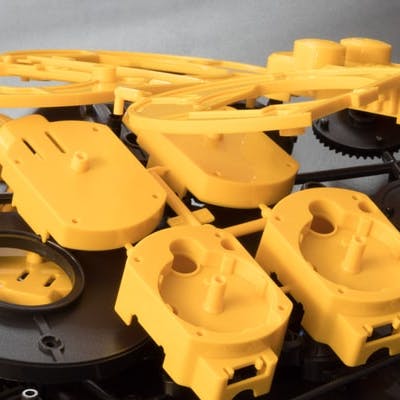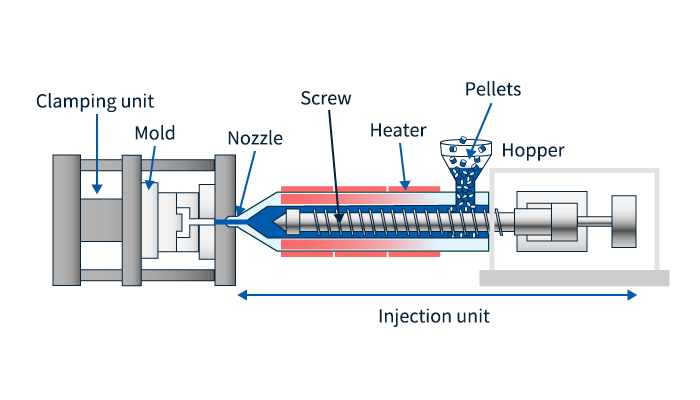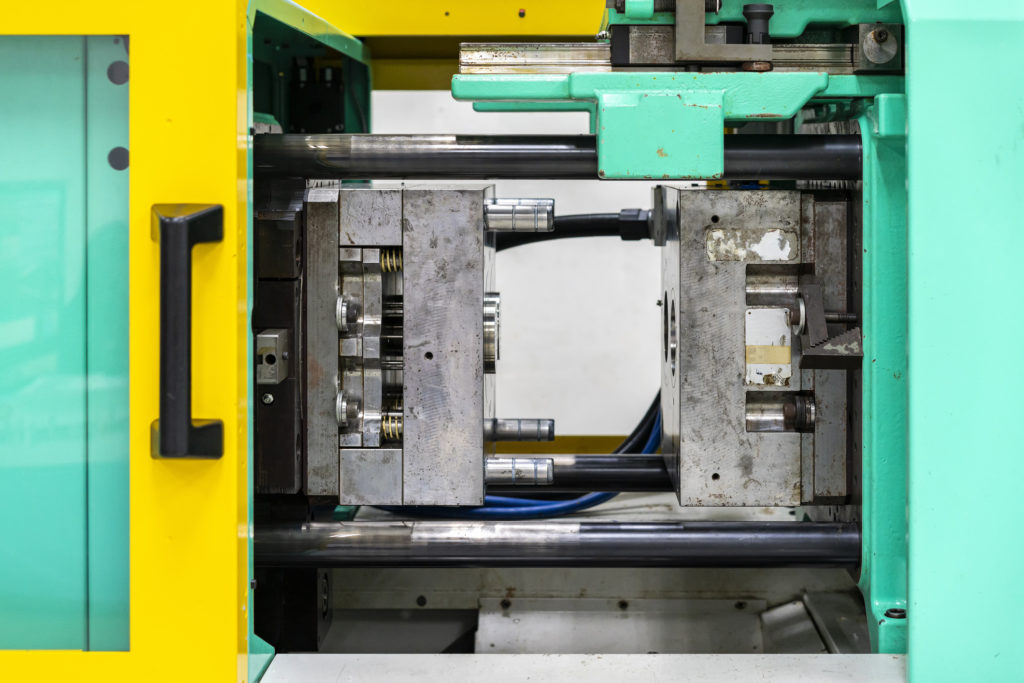The Future of Plastic Injection Molding: Innovations and trends to View
As the plastic shot molding sector evolves, several essential patterns are arising that assurance to improve its landscape. Automation and smart manufacturing techniques are set to improve efficiency, while the change in the direction of lasting products mirrors an expanding ecological awareness. In addition, advancements in 3D printing are leading the way for unprecedented design flexibility. These advancements likewise bring forth difficulties that need careful consideration. Recognizing just how these components will communicate and influence future techniques is critical for stakeholders aiming to browse this transformative period efficiently.
Automation and Smart Manufacturing
As the plastic shot molding industry advances, automation and wise manufacturing are taking center phase, reinventing production procedures - Plastic Injection Molding. The integration of innovative innovations such as robotics, IoT (Internet of Points), and synthetic knowledge is allowing manufacturers to boost effectiveness, decrease operational costs, and enhance product top quality. Automated systems improve operations, reducing hand-operated intervention and boosting throughput, which is vital in fulfilling the rising need for quick production cycles
Smart making technologies assist in real-time monitoring and data evaluation, allowing business to maximize machine performance and forecast upkeep needs. This positive strategy not only lessens downtime yet also prolongs the life-span of equipment. The usage of joint robotics, or cobots, boosts the flexibility of production lines, enabling makers and employees to run side by side safely and efficiently.
The adoption of automation in plastic injection molding is not merely a trend but a tactical critical for businesses aiming to remain competitive in a global market. By harnessing these technologies, manufacturers can achieve higher accuracy, lower waste, and adjust promptly to transforming consumer needs, positioning themselves for sustainable growth in an increasingly automated future.
Lasting Products and Practices
The push towards automation and smart production has actually led the way for a greater emphasis on lasting products and methods within the plastic injection molding industry. Firms are significantly seeking environmentally friendly alternatives to traditional petroleum-based plastics, bring about the fostering of bio-based and recycled materials. These lasting materials not only lower ecological effect but additionally line up with consumer need for greener products.

In addition, cooperation in between suppliers, material suppliers, and environmental organizations is fostering development in the development of sustainable materials that meet performance standards without compromising top quality. As regulations around plastic use come to be more stringent, the market is positioned to adapt by accepting these sustainable approaches, ensuring long-term stability and lowering dependence on non-renewable resources. The integration of sustainability into plastic shot molding is not just a pattern; it is ending up being a vital component of corporate duty and functional excellence.
Advances in 3D Printing
Current improvements in 3D printing innovation are considerably changing the landscape of plastic shot molding. As soon as difficult or difficult to achieve via conventional approaches, the combination of additive manufacturing procedures allows for the fast prototyping of complex geometries that were. This ability not only speeds up product advancement cycles but likewise reduces product waste, aligning with the growing need for sustainable production practices
Additionally, the emergence of hybrid production techniques, which integrate 3D printing and shot molding, provides suppliers the ability to produce intricate styles while keeping the efficiency of mass production. This strategy enables the production of tailored components tailored to certain consumer requirements without compromising the rate and scalability that shot molding provides.
Furthermore, advancements in materials, such as high-performance polymers and compounds especially designed for 3D printing, are improving the practical capacities of published components. These materials can endure higher stress and anxiety and show improved thermal homes, making them ideal for even more requiring applications.
As 3D printing remains to evolve, its integration into plastic injection molding processes promises to enhance productivity, decrease expenses, and foster advancement in product layout, placing suppliers to much better fulfill the obstacles of an affordable market.
Information Analytics and IoT Assimilation
Information analytics and the combination of the Web of Things (IoT) are reinventing plastic injection molding by offering producers with unprecedented reference insights into their procedures. By leveraging real-time information gathered from interconnected makers and sensors, producers can keep track of performance metrics, recognize inadequacies, and enhance manufacturing processes. This data-driven method assists in predictive maintenance, lowering downtime and expanding devices life expectancy.
Additionally, IoT integration enables improved quality assurance. By continuously tracking variables such as stress, temperature, and cycle times, makers can quickly detect inconsistencies from developed parameters and make changes in genuine time. This not only enhances product uniformity but additionally minimizes waste and scrap rates.
The combination of data analytics and IoT modern technologies also encourages producers to take on more dexterous production approaches. With access to detailed data analytics, companies can reply to market demands with better flexibility, readjusting production routines and arrangements as needed. This flexibility is important in a quickly changing manufacturing landscape.

Personalization and Style Versatility
Just how can modification and style flexibility boost the competitiveness of plastic shot molding? Modification allows manufacturers to fulfill particular customer requirements, accommodating one-of-a-kind dimensions, shapes, and performances that conventional items may not fulfill.
Innovations in style technologies, such as computer-aided style (CAD) and rapid prototyping, further reinforce this trend. These tools allow developers to develop intricate geometries and intricate her comment is here patterns, which can be seamlessly incorporated into the manufacturing process. Because of this, manufacturers can respond swiftly to altering customer preferences and market demands.
Furthermore, the application of modular tooling systems enhances style flexibility, enabling quicker changes between different item styles without comprehensive downtime. This flexibility can bring about reduced preparations and reduced production expenses, making business extra nimble and competitive. Eventually, welcoming customization and design adaptability in plastic injection molding not just raises product offerings yet likewise reinforces market positioning in an ever-evolving landscape.
Conclusion
The future of plastic injection molding is identified by significant advancements in automation, sustainable techniques, and innovative products. The assimilation of IoT and information analytics will certainly improve operational performance and predictive upkeep. The fostering of bio-based and recycled materials, alongside development in 3D printing, will foster sustainability within the industry. Personalization through modular tooling and fast prototyping will enable makers to continue to be affordable and receptive to the dynamic needs navigate here of the market.

The future of plastic shot molding is characterized by considerable advancements in automation, lasting techniques, and cutting-edge materials.
Comments on “Exactly How Plastic Injection Molding Drives Efficiency in Automation”